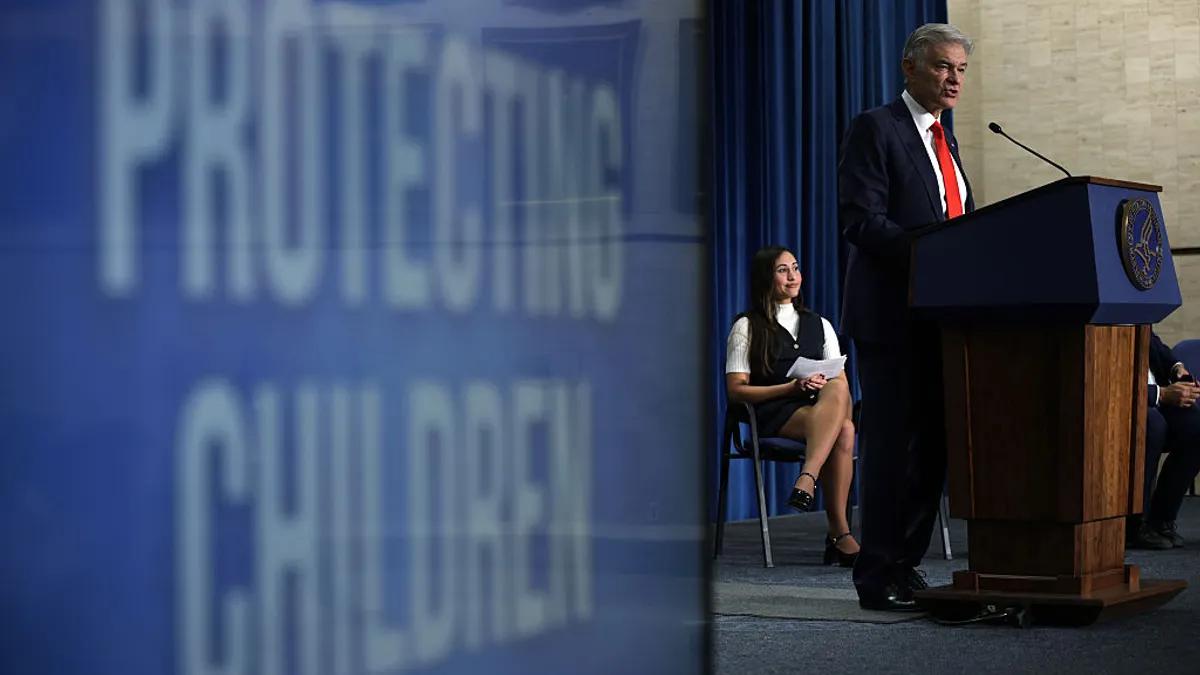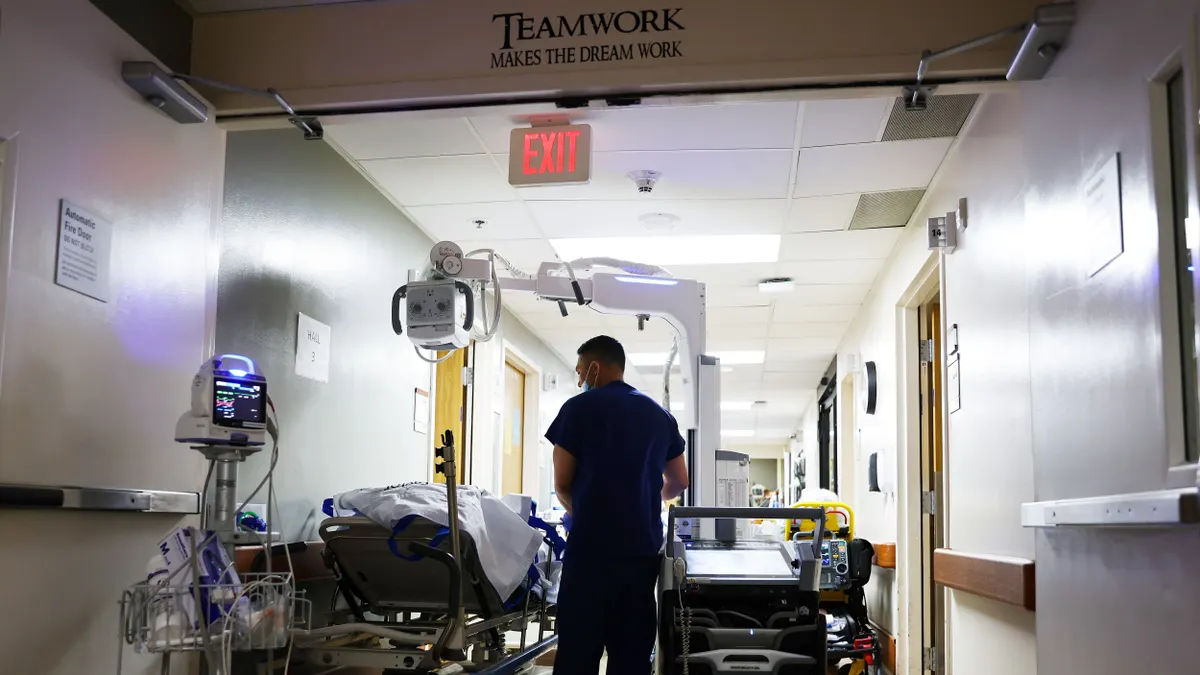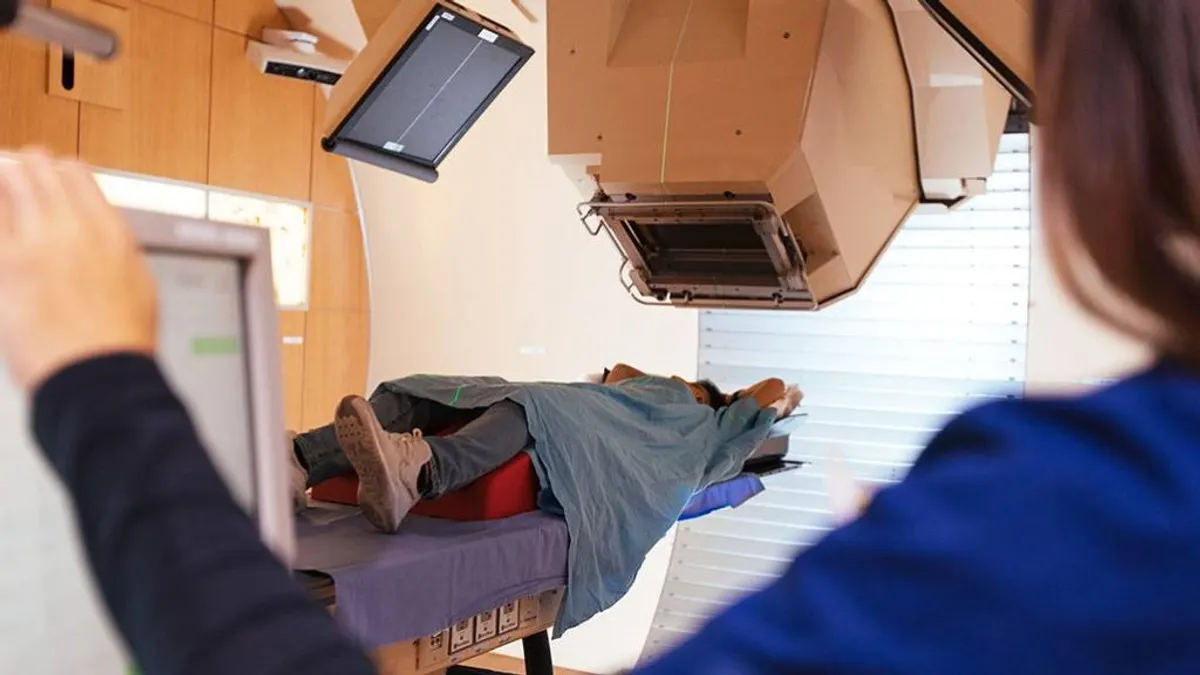If employees at Anne Arundel Medical Center in Annapolis, Maryland, hanker for cigarettes these days, they might run off to their cars for a quick smoke or head out to a public sidewalk. And e-cigarettes are all the rage. But that is about to change in a big way on July 1 – and in a bigger way on July 1, 2015.
After two years of focus groups, surveys and legal advice, Anne Arundel says it is leading the charge with Maryland's hospitals by reinforcing its commitment to wellness and expanding its tobacco policy:
-
Effective July 1, its policy will prohibit the use of all tobacco products, including e-cigarettes and snuff. Technically, Anne Arundel Medical Center has been “smoke-free” since 2007. But its current policy has focused primarily on its main campus and has been limited to cigarette use. The new policy will apply to all of its far-flung facilities, and tobacco-free zones will include sidewalks, parking lots and garages: with no areas designated for smoking or other tobacco use. It also will be applied more strongly to medical staff and physician offices, vendors, hospital volunteers and, to a certain extent, visitors, as well as to employees.
-
Starting July 1, 2015, the hospital won't hire individuals who use tobacco products. Anne Arundel officials said the policy doesn't apply to current employees who use tobacco.
The nuts and bolts
By adopting these policies, Anne Arundel, a regional health system, said it is joining other healthcare organizations, including The Cleveland Clinic and Geisinger Health System, in becoming tobacco-free.
In addition to its main 57-acre campus in Annapolis, AAMC also owns office buildings “20 miles west, five miles east, and one across the [Chesapeake] Bay Bridge,” Cathy Copertino, executive director of Anne Arundel Medical Center's DeCesaris Cancer Institute, told Healthcare Dive. “We now are saying employees in those buildings cannot use tobacco products at work,” she said. The new policy “pretty much means you cannot smoke at work,” because it is too difficult to get off-campus to other locations during 30-minute lunch breaks or other 10-minute breaks over the course of the workday, she said.
Anne Arundel has seen “a dramatic increase in people smoking e-cigarettes on campus,” Copertino added. “There's a normalizing of cigarette smoking again, and that's a big concern.” She called it “irresponsible” of a healthcare organization to consider e-cigarettes to be a safe alternative to regular cigarettes without federal approval and further scientific evidence supporting such claims. While allowing e-cigarettes in the future remains “an open question” to a certain extent, she said, Anne Arundel “most likely won't allow [e-cigarettes] no matter what.”
Anne Arundel's employees can continue to use nicotine gum and patches, Copertino said, “but we don't advocate chewing gum in front of patients. We say, 'Take a break and do your thing.'”
Under its new hiring policy starting next July, Anne Arundel will expand drug screenings, Copertino said. “Any new employee is tested now for other drugs. We'll be adding the nicotine test to that,” she said. Anne Arundel already routinely uses nicotine screening prior to surgeries if patients would be at risk, such as prophylactic bilateral mastectomies, because smoking might impede healing, she said.
Copertino noted that Anne Arundel's expanded policy applies to all employees, physicians, patients, contract staff, vendors, volunteers, students and – to a certain extent – visitors at all its facilities. The system is putting new policies into contracts to the effect that vendors cannot smoke, even in public areas, she said. Notices are being sent to vendors and physician offices in Anne Arundel's buildings.
Technically, Anne Arundel's current policy already includes physicians and visitors, she said. “But now, doctors won't be allowed to go to the public sidewalk and smoke, and we'll encourage visitors not to do so,” and inform them of smoking cessation programs, she said. Adding doctors and hospital volunteers will put about 3,000 more people under Anne Arundel's anti-tobacco policy, she said, noting that about 20% of its 4,000 employees (excluding doctors and volunteers) smoke.
Industry response
Copertino conceded that Anne Arundel is getting push back from some employees related to its June 18 announcement of impending policy changes. But she said she expects Anne Arundel's new policies to stand up to any legal challenges.
According to Copertino, Anne Arundel has been advised by lawyers that there is no constitutional right to smoke, no discrimination under equal protection laws, and no conflict with the Americans with Disabilities Act; and employers in Maryland, similar to most states, basically are allowed to use workplace rules restricting what employees do during their work day.
Anne Arundel isn't a unionized hospital, she noted, so it didn't have to go through collective bargaining before making policy changes.
Service Employees International Union (SEIU) and National Union of Healthcare Workers (NUHW) didn't return calls for comment on hospitals' smoking policies in general.
Other groups seemed quiet on the matter. “We don't have any position on this [i.e., anti-tobacco policy changes at Anne Arundel),” ACLU of Maryland spokeswoman Meredith Curtis told Healthcare Dive. “We're not weighing in on this at all.”
The Cleveland Clinic example
“Every hospital of course has its own smoking policies...and it's not something we'd typically get involved in,” spokesman David Simon of the Maryland Hospital Association, which represents 46 acute-care hospitals statewide, told Healthcare Dive.
The Cleveland Clinic's campuses went smoke-free in July 2005. In January 2007, the system began offering free smoking cessation services to Cuyahoga County residents and set up a tobacco treatment center. It stopped hiring smokers in September 2007, and in July 2008 began offering free tobacco cessation courses and medication for workers in its employee health plan.
Under its current policy, e-cigarettes are not permitted on Cleveland Clinic's campuses, largely due to the “healthy lifestyle culture” that it promotes to employees, patients and visitors, a spokeswoman said.
“We see an 84% success rate after one year of tobacco cessation among our employee and spousal population group,” Dr. Daniel Neides, medical director for Cleveland Clinic’s Wellness Institute, said in a statement to Healthcare Dive. “As a result, we continue to see a decrease in absenteeism among our workforce. We’re bending the cost curve with disease management programs by decreasing instances of chronic disease that may result from smoking.”




















